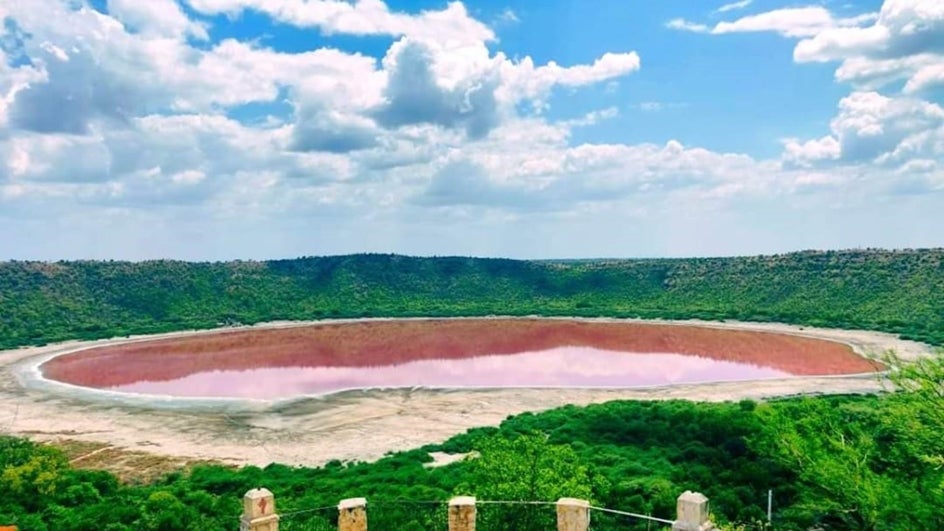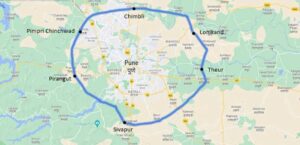An enigma in Maharashtra: The Lonar Lake

An enigma in Maharashtra: The Lonar Lake
At this mysterious spot, the sand is magnetic and compasses cease to function
One of nature’s undiscovered treasures, Lonar Lake in Maharashtra was created by a meteor impact around 52,000 years ago. The meteor that formed this remarkable crater had a mass of two million tons and traveled at an estimated velocity of 90,000 kilometers per hour. Every year, dozens of meteors fall toward Earth, yet none have left behind a structure quite like Lonar Lake. Lonar Lake could look like any other body of water when viewed from above. But this almost flawless circular lake is one of the world’s two natural craters made completely of the dark, finely grained volcanic rock known as basalt. Its waters are even more mysterious because they are unusually seven times saltier than seawater.
Lonar Crater was one of Maharashtra’s best-kept mysteries for millennia. The lake was essentially unknown, situated roughly 550 kilometers from Mumbai and 170 km from Aurangabad. Exploration was discouraged by the difficult approach leading to the lake, which featured slick ground and banks thought to be quicksand bogs. The crater wasn’t discovered until 1823, or about 200 years ago, by British explorer JE Alexander, who was studying the area’s historic temples. In contrast to the flat terrain around them, he found a different fauna within the crater as well as numerous abandoned temples. Despite this, because the crater is situated on the Deccan plateau, which is recognized for its volcanic origins, scientists first thought it to be volcanic.
A more legendary origin for Lonar Lake is provided by local legend, which holds that it was created when Lord Vishnu slew the demon Lonasura, who had been torturing the people, and threw him with great force into the netherworld. This mythology emphasizes the lake’s scientific curiosity as well as its cultural relevance. Lonar Lake, sometimes referred to as the “Bowl of Mysteries,” is encircled by a lot of unsolved mysteries and conjecture. Researchers studying meteorites, including astronomers, geologists, ecologists, and even NASA, have been interested in this mystery.
The defunct compasses at the lake present another fascinating enigma. Travelers frequently discover that their compass directions either stop functioning or exhibit noticeable variations. The peculiar electromagnetic waves interacting with electrical equipment, presumably as a result of the lake’s meteor-impact origin, have been attributed to this oddity.
It is practically impossible for a lake to be both saline and alkaline at the same time from a scientific standpoint. Lonar Lake, however, defies this convention. The lake is divided into two areas that don’t mix: the inner alkaline zone and the outer neutral zone, each of which has its own distinct flora and fauna. NASA and the Geological Survey of India have conducted substantial investigation because of this exceptional attribute.
NASA has observed parallels between the volcanic basalt of the crater and the lunar craters. There are similarities to the geology of the moon due to the occurrence of particular rock minerals like glass spherules and micro breccias. Furthermore, a recently discovered bacterial strain at the lake’s location mimics one that can be found on Mars.
Overnight, the lake took on a pink hue. Lonar Lake saw a remarkable change in 2020 when its water took on a pink hue that confused onlookers. The phenomenon led to research being ordered by the government. Some experts believe that the shift in color is caused by algae, salinity rising, or a pink-colored microorganism known as Halobacteriaceae.









